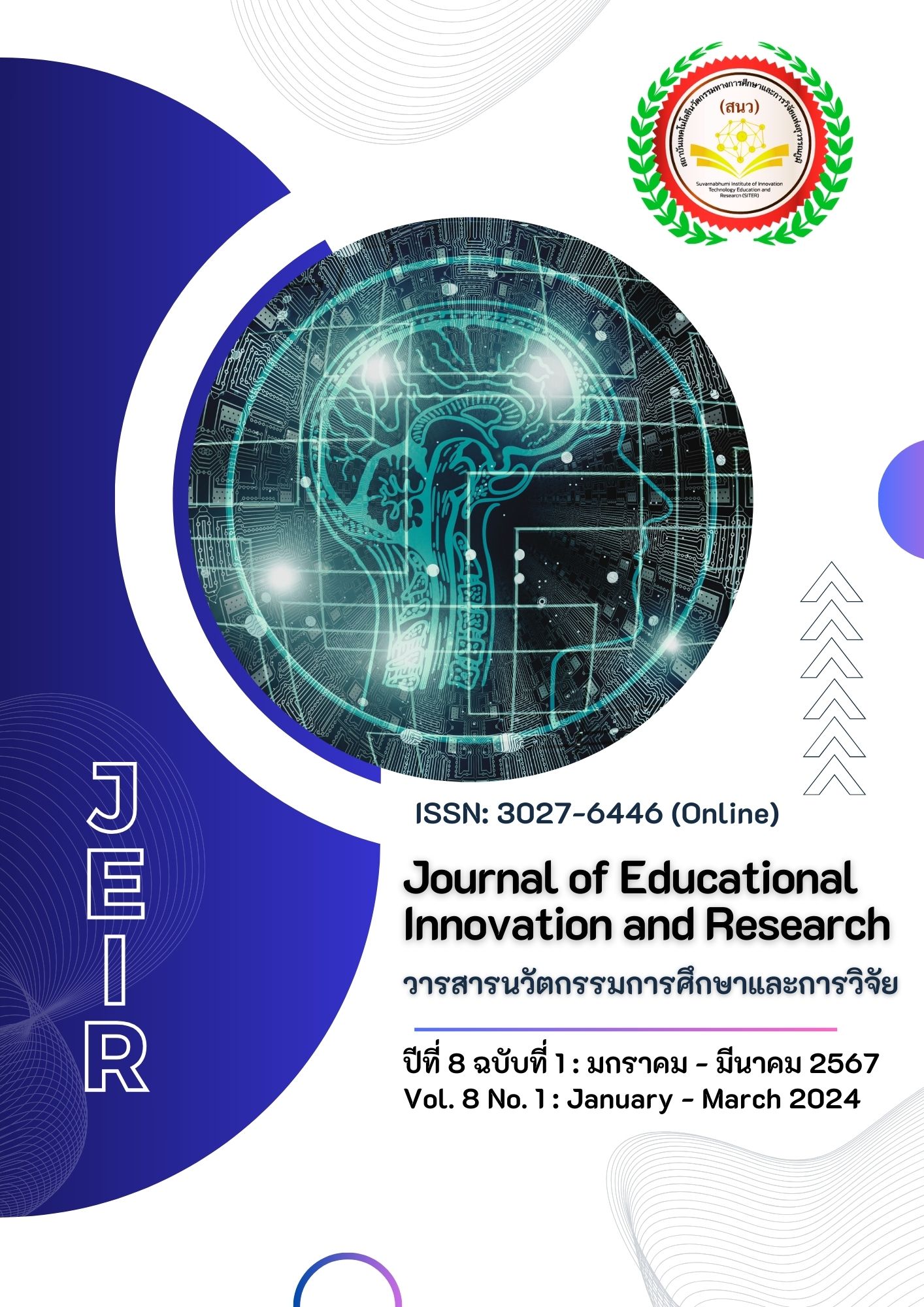การตรวจหาสารเคมีที่ติดมากับรอยลายนิ้วมือแฝง โดยเทคนิคไมโครสโคป ฟูเรียร์ทรานส์ฟอร์มอินฟราเรดสเปกโตรสโคปีสำหรับการประยุกต์ใช้ ทางนิติวิทยาศาสตร์
Main Article Content
บทคัดย่อ
วัตถุประสงค์ของงานวิจัยนี้ 1) เพื่อศึกษาการใช้เทคนิคไมโครสโคป ฟูเรียร์ทรานส์ฟอร์ม อินฟราเรด (FTIR) สเปกโตรสโคปี ในการวิเคราะห์รอยลายนิ้วมือแฝงที่ติดอยู่บนวัตถุ 2) เพื่อตรวจหาชนิดของสารเคมีที่ปนเปื้อนอยู่บริเวณรอยลายนิ้วมือแฝงโดยใช้ภาพจากสเปกตรัมของเทคนิค FT-IR 3) เพื่อศึกษาระยะเวลาการคงอยู่ของสารเคมีที่ปนเปื้อนบนรอยลายนิ้วมือแฝงภายหลังการสัมผัสกับสารนั้น ๆ กลุ่มตัวอย่างสารเคมีที่ใช้ในการศึกษานี้เป็นตัวอย่างที่มักจะพบได้ในการสืบค้นที่เกิดขึ้นทางด้านนิติวิทยาศาสตร์ ได้แก่ เมทแอมเฟตามีน, คาเฟอีน, พาราเซตามอล, ผงกระท่อม และดินส่งกระสุนปืน ในงานวิจัยนี้รอยลายนิ้วมือแฝงที่วิเคราะห์จะถูกเก็บจากอาสาสมัคร โดยอาสาสมัครสัมผัสกับสารตัวอย่างชนิดต่าง ๆ จากนั้นประทับลายนิ้วมือลงบนพื้นแผ่นกระจกสไลด์ ภายหลังจากการสัมผัสเป็นเวลาทันทีและ 1, 3, และ 6 ชั่วโมง ตามลำดับ ผลการวิจัยพบว่า
1. ภาพถ่ายรอยลายนิ้วมือแฝงบนพื้นผิวกระจกที่ได้จากกล้องไมโครสโคปสามารถตรวจวัดได้
โดยสังเกตจากการลดลงของจุดลักษณะสำคัญพิเศษเมื่อลายนิ้วมือแฝงถูกทิ้งไว้นานขึ้นภายหลังจากการสัมผัสกับสารตัวอย่าง
2. เทคนิค FT-IR ที่ใช้ในงานวิจัยนี้ สามารถใช้วิเคราะห์สารเคมีที่ปนเปื้อนอยู่บนรอยลายนิ้วมือแฝง ภายหลังการสัมผัสกับสารเคมีได้
3. เทคนิคที่ใช้ในงานวิจัยนี้ สามารถใช้ในการตรวจสอบสารตกค้างบนลายนิ้วมือแฝง หลังจากอาสาสมัครสัมผัสสารตัวอย่าง แม้ว่าจะสัมผัสกับสารตัวอย่างมานานถึง 6 ชั่วโมง
ผลการศึกษาในครั้งนี้แสดงให้เห็นถึงศักยภาพในการใช้ภาพถ่ายจากเทคนิค FT-IR ในการตรวจหาสารเคมีต่าง ๆ ที่ตกค้างบนรอยลายนิ้วมือแฝง เพื่อประโยชน์ในงานทางด้านนิติวิทยาศาสตร์
Article Details

อนุญาตภายใต้เงื่อนไข Creative Commons Attribution-NonCommercial-NoDerivatives 4.0 International License.
เอกสารอ้างอิง
Boseley, R. E., Howard, D. L., Vongsvivut, J., Hackett, M. J., & Lewis, S. W. (2022). Leaving a mark on forensic science: how spectroscopic techniques have revealed new insights in fingerprint chemistry. Spectroscopy Europe, 34(3), 22-26. https://doi.org/10.1255/sew.2022.a8
Chen, T., Schultz, Z. D., & Levin, I. W. (2009). Infrared spectroscopic imaging of latent fingerprints and associated forensic evidence. Analyst, 134(9), 1902-1904. https://doi.org/10.1039%2Fb908228j
Coletti, F., Romani, M., Ceres, G., Zammit, U., & Guidi, M. C. (2021). Evaluation of microscopy techniques and ATR-FTIR spectroscopy on textile fibers from the Vesuvian area: A pilot study on degradation processes that prevent the characterization of bast fibers. Journal of Archaeological Science: Reports, 36, 102794. https://doi.org/10.1016/j.jasrep.2021.102794
Editorial Department. (n.d.). Personage – Edmond Locard. Retrieved February 1, 2022, from http://www.forensicchula.net/FMJ/journal/topic/locard.pdf
Ewing, A. V., & Kazarian, S. G. (2017). Infrared spectroscopy and spectroscopic imaging in forensic science. Analyst, 142(2), 257-272. https://doi.org/10.1039/C6AN02244H
Geskovski, N., Stefkov, G., Gigopulu, O., Stefov, S., Huck, C. W., & Makreski, P. (2021). Mid-infrared spectroscopy as process analytical technology tool for estimation of THC and CBD content in Cannabis flowers and extracts. Spectrochimica Acta Part A: Molecular and Biomolecular Spectroscopy, 251, 119422. https://doi.org/10.1016/j.saa.2020.119422
Grant, A., Wilkinson, T., Holman, D. R., & Martin, M. C. (2005). Identification of recently handled materials by analysis of latent human fingerprints using infrared spectromicroscopy. Applied Spectroscopy, 59(9), 1182-1187. https://doi.org/10.1366/0003702055012618
Hazarika, P., Jickells, S. M., Wolff, K., & Russell, D. A. (2008). Imaging of latent fingerprints through the detection of drugs and metabolites. Angewandte Chemie International Edition, 47(52), 10167-10170. https://doi.org/10.1002/anie.200804348
Imsin, A., Supaluknar, S., Choosakoonkriang, S., and Kheawpum, O. (2016). Detection of seminal stains on ceramic tiles and fabrics byAttenuated Total Reflection Fourier Transform Infrared Spectroscopy (ATR-FTIR). Veridian E-Journal,Science and Technology Silpakorn University, 3(3), 59-69.
Jickells, S. M. (2008). Fingerprinting: into the future. Measurement and Control, 41(8), 243-247. https://doi.org/10.1177/002029400804100802
Ngaamkijpinyo, N. (2022). Chemistry in forensic science. Retrieved March 10, 2022, from https://www.scimath.org/article-chemistry/item/12483-2021-10-19-04-37-09
Ricci, C., Phiriyavityopas, P., Curum, N., Chan, K. A., Jickells, S., & Kazarian, S. G. (2007). Chemical imaging of latent fingerprint residues. Applied Spectroscopy, 61(5), 514-522. https://doi.org/ 10.1366/ 000370207780807849
Timad, N., Supaluknar, S., and Choosakoonkriang, S. (2017). Examination of automotive paint flakes by A Attenuated Total Reflectance Fourier Transform Infrared Spectroscopy (ATR-FTIR) and Color determination). Veridian E-Journal,Science and Technology Silpakorn University, 4(4), 114-129.
Veangchai, P. (2013). Biological trace evidence. Retrieved February 1, 2022, from http://biology.ipst. ac.th/?p=102
Williams, D. K., Schwartz, R. L., & Bartick, E. G. (2004). Analysis of latent fingerprint deposits by infrared microspectroscopy. Applied Spectroscopy, 58(3), 313-316. https://doi.org/10.1366/ 000370204322886663


